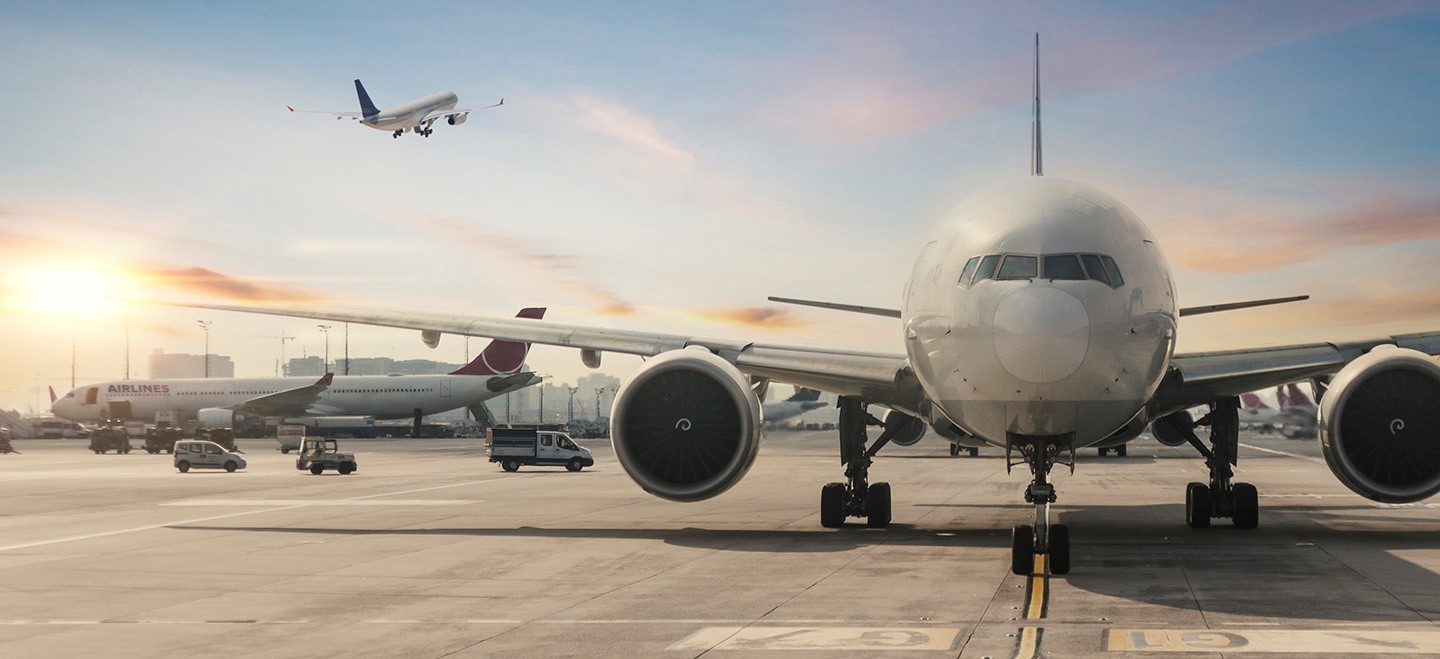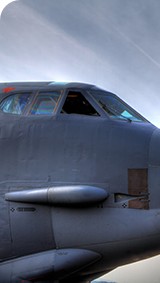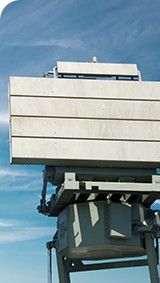
Test Propels the Next Generation of Quiet, Speedy Aircraft
Test and measurement are key to aircraft noise reduction that will unlock aviation innovation benefits for companies, passengers, workers, and communities.
Test is Essential to Reduce Aircraft Noise
Though we all hear the world differently, we are constantly surrounded by a cacophony of sound wherever we go—from leaves bristling in the grass and the hum of the dishwasher in the kitchen to airplanes zipping above the roof. As the number of devices and machines whirling in the background increases, technology becomes more integral to managing sounds so that we can more comfortably navigate our environments.
Testing and innovation are responsible for helping us get sounds “just right.” They help make louds things quieter and quiet things louder. As we build more sophisticated aviation equipment, industrial noise mitigation and aircraft noise reduction will be crucial to keeping harmony between technology and society.
In a recent Testing 1, 2, 3 podcast episode, Jim Underbrink, a former Boeing Technical Fellow with 35 years of experience in dynamic data acquisition systems and test methods, shared how sound measurement and noise measurement will be key to propelling innovations in travel and reducing large sounds.
The Source of Sound
If you took Physics 101, you’ll remember that sound waves are invisible vibrations that travel away from a source through a medium. It’s hard to wrap your mind around testing something that can’t be seen. To perform noise testing and analyze aircraft noise, Underbrink explained that engineers set up microphones in a mathematical pattern, or phased array, around a runway to essentially “take pictures of noises” through acoustic cameras. These microphones can pinpoint exactly where noise is coming from to address the loudest sources in aircraft and reduce overall aircraft noise emissions.
After data has identified significant noise sources, engineers can model changes in parts of an aircraft’s design and run computational predictions to see potential noise impacts. For example, let’s say a flap edge of an airplane was making too much noise, particularly under windy conditions. By modeling a plane with an alternate flap edge design, engineers can “see” if the change would reduce noise. Underbrink said, “If we know we’re working on the loudest source on the airplane, and we make a change to it in a model scale test and see that its noise is reduced five decibels, we can figure out how much the overall noise of the airplane is going to go down due to reducing that source. You can start to attack all these problem areas and start to lower and ratchet down the overall noise of the airplane.”
Creating Quieter Skies
As more planes whiz through the sky, there’s continued pressure to reduce the noise levels of aircrafts for legal and societal reasons. From development, every plane must meet a certain noise standard to be certified to fly. The Federal Aviation Administration (FAA) enforces noise levels from planes on a decibel-based standard to protect communities—and some highly populated areas near airports like London Heathrow, Washington National Airport, or John Wayne Airport in California, have even tighter restrictions. For example, a big freight aircraft might be restricted to flying only at certain times if it exceeds an area’s noise thresholds. Stricter rules have motivated companies to acquire quieter aircraft to minimize business interruptions.
Excessive noise is one of the reasons the FAA banned supersonic aircraft over land in the 1970s—the booms were too disruptive and often vibrated and even broke windows on the ground. But supersonic travel could make a comeback if designs get sophisticated and efficient enough to comply to sound restrictions. Who wouldn’t prefer to travel from New York to London in about three hours in a supersonic aircraft, compared to more than 7 hours in a normal jet?
Underbrink said we the have technology to make booms quieter or achieve “low boom.” “The goal of low-boom technology is to design aircraft such that they still break the sound barrier but change the character of the shockwave, so that is minimal and less disruptive to people on the ground.”
Prioritizing noise comfort for surrounding communities, passengers, and airline workers will be essential to deploying the next generation of aircraft with low-boom capabilities. Underbrink believes that test, validation, and improved, specialized instrumentation that can produce higher fidelity measurements will help suppress noise and revolutionize aircraft from the inside out. He explained that the challenges never end, but he’s dedicated to finding real-world solutions to improve aircraft: “As you get some things quieter, new things pop up, and now we need methods to get at those sources of noise.”
Hear more from James Underbrink in the full podcast episode on Testing 1, 2, 3 to understand the rigorous testing that into reducing aircraft noise.
For more insights, listen to other episodes from season 2 of our Testing, 1, 2, 3 podcast. This engineering podcast connects you to tech leaders discussing how test plays a pivotal role in solving society’s biggest challenges—now and in the future.
You May Also Like


Will the B-52 Ever Become Obsolete?
Simply put, “out with the old and in with new” cannot exist in the aerospace and defense industry. Instead, aircraft need to be produced and supported for decades even as capabilities continuously evolve.


Radar Engineers Adapt to Hypersonic Challenges
Hypersonic vehicle technologies, which can include anything from airplanes and spacecrafts to missiles, are so fast that their speed can break apart surrounding air molecules.